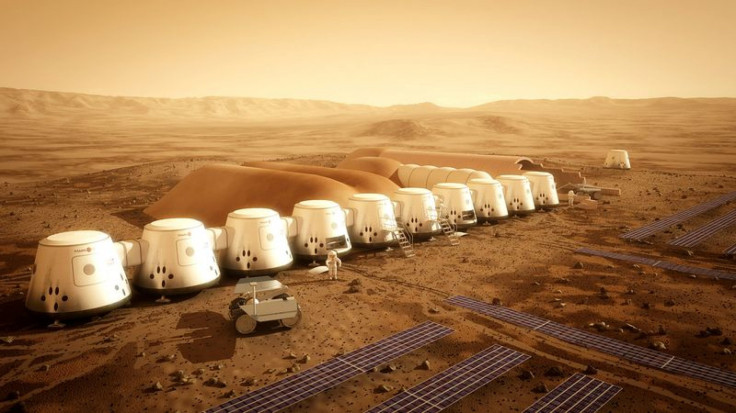Mars One Opens Astronaut Application Program For Those Willing To Take One-Way Trip

Tired of living on this planet? In 10 years (and if an incredibly large number of technical things work out), you might be one of four settlers with a one-way ticket to Mars.
Nonprofit Dutch company Mars One unveiled its astronaut application form on Monday. For a small fee -- tacked to your country’s GDP, it can be anywhere from $5 to $75 -- you can make a profile and a video explaining why you should be picked to lead the first wave of settlers on the Red Planet in 2023. But remember: There’s no return trip.
At the moment, there’s no requirement that a potential Mars colonist needs to be in peak physical condition -- just free of chronic illnesses and possessing corrected vision of 20/20 or better. Later rounds of the astronaut selection process will involve more intense medical checkups, and the company will be filtering out those that might not be psychologically suited for the extreme and lonely life of a Martian settler.
“If someone’s an outdoor person -- ‘I need my mountains, I need to see the flowers’ -- it’s not for them to apply,” Mars One medical officer Norbert Kraft, who has researched the physiological effects of spaceflight for NASA and other space agencies, said at a press briefing in New York City on Monday.
Candidates that can work well with others in tight quarters will also be highly prioritized.
But still, just how feasible is it to colonize Mars?
“The mission is built around technology that exists today,” Mars One founder Bas Lansdorp said.
Mars One isn’t actually building any of the components for its mission, and some of the elements are still being validated. The company cobbling together parts from a lot of independent contractors: transport of cargo and humans from Earth via a forthcoming Dragon capsule from private company SpaceX, a life-support system from Arizona's Paragon Space Development, and communication satellites from the UK's Surrey Satellite Technology Ltd.
It’s definitely different from any space mission that’s come before -- if successful, Mars One would be a crowning achievement for the private space industry.
However, there are still lmany technical issues to be resolved and fleshed out. Will the astronauts still be fit to fly 10 years after applying? Will the retrorocket landing system designed for the Dragon capsule land smoothly on Mars? How exactly will the colonists dispose of their waste? Will there be enough supplies to provide food, water and shelter for the colonists? Will the solar panels provide enough energy? Will covering habitats with Martian soil be an adequate amount of protection from the cosmic radiation that bombards the Red Planet?
The risks are pretty high. At the moment, Lansdorp says the company does not plan to send up test mammals before the humans, so the settlers might be the first to experience the stressful environments of long-term space flight and inhabiting another world. And for the colony to sustain itself, the life-support system will have to be nigh-on error-proof; with a seven-month journey between Earth and Mars, a rescue crew won’t be able to help with imminent danger. Plus, once the colonists get there, there’s virtually no way to control them if one suddenly declares himself King of Mars.
Even these situations assume the launch schedule goes as planned. Any number of delays along the production line, or trouble finding an appropriate colonizing site, could throw the colonists’ schedules off by years or more.
With so many things needing to go right, it’s no wonder that when Mars One first announced its plans to colonize Mars, it was met with intense skepticism.
For the entrepreneurial folks at Mars One, there seems to be a plucky sense that the technology will sort itself out eventually. Their main concern is funding -- a $6 billion price tag is projected to get the first four colonists to Mars, and it’s certainly possible that could be an underestimation. But they think the media spectacle of a Mars landing will be attractive enough to lure investors and advertisers.
“The stories we will tell around it will make it financially possible,” Lansdorp said on Monday.
© Copyright IBTimes 2024. All rights reserved.





















